An Afternoon Of Coaching On A Pro Simulator Made Me A Better Driver
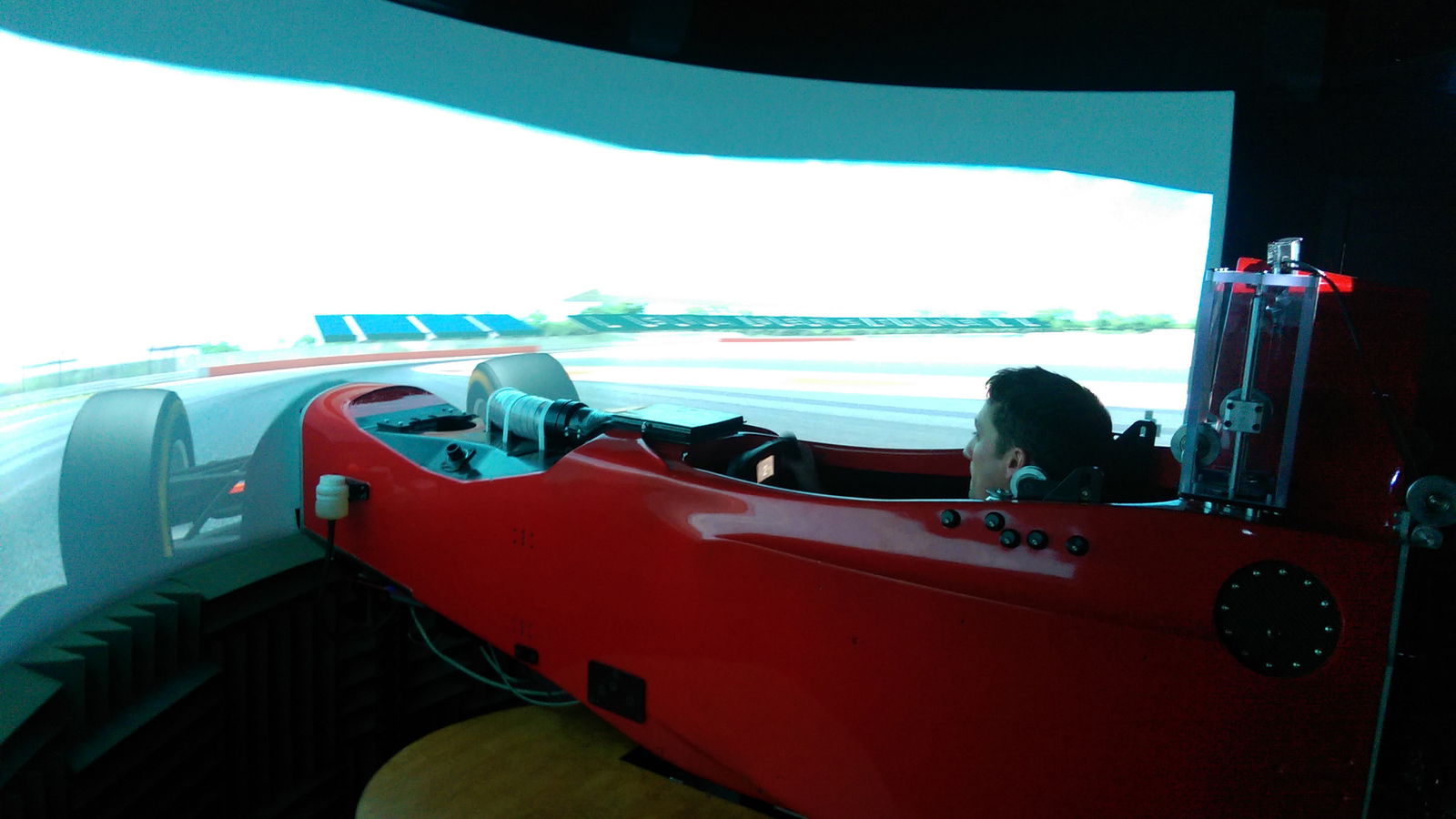
When you arrive at Pro Sim‘s headquarters in an inconspicuous warehouse an hour or so south of London, you can’t help but feel like a kid at Christmas. In a small room, a bank of computers sit in front of a large window, through which half a single seater racing car is visible beneath a huge projector screen. This might seem like the ultimate gaming rig, but there’s way more to it than that.
I’ve been invited down by Damani Marcano, a young up-and-coming racing driver competing in the Volkswagen Racing Cup. After a recent chat, he invited me to find out how he prepares for a race weekend using Pro Sim’s simulator. Adrian Quaife-Hobbs is the man in charge of this wicked setup, and he decides to throw me in without much of an introduction to gauge where exactly I’m at.
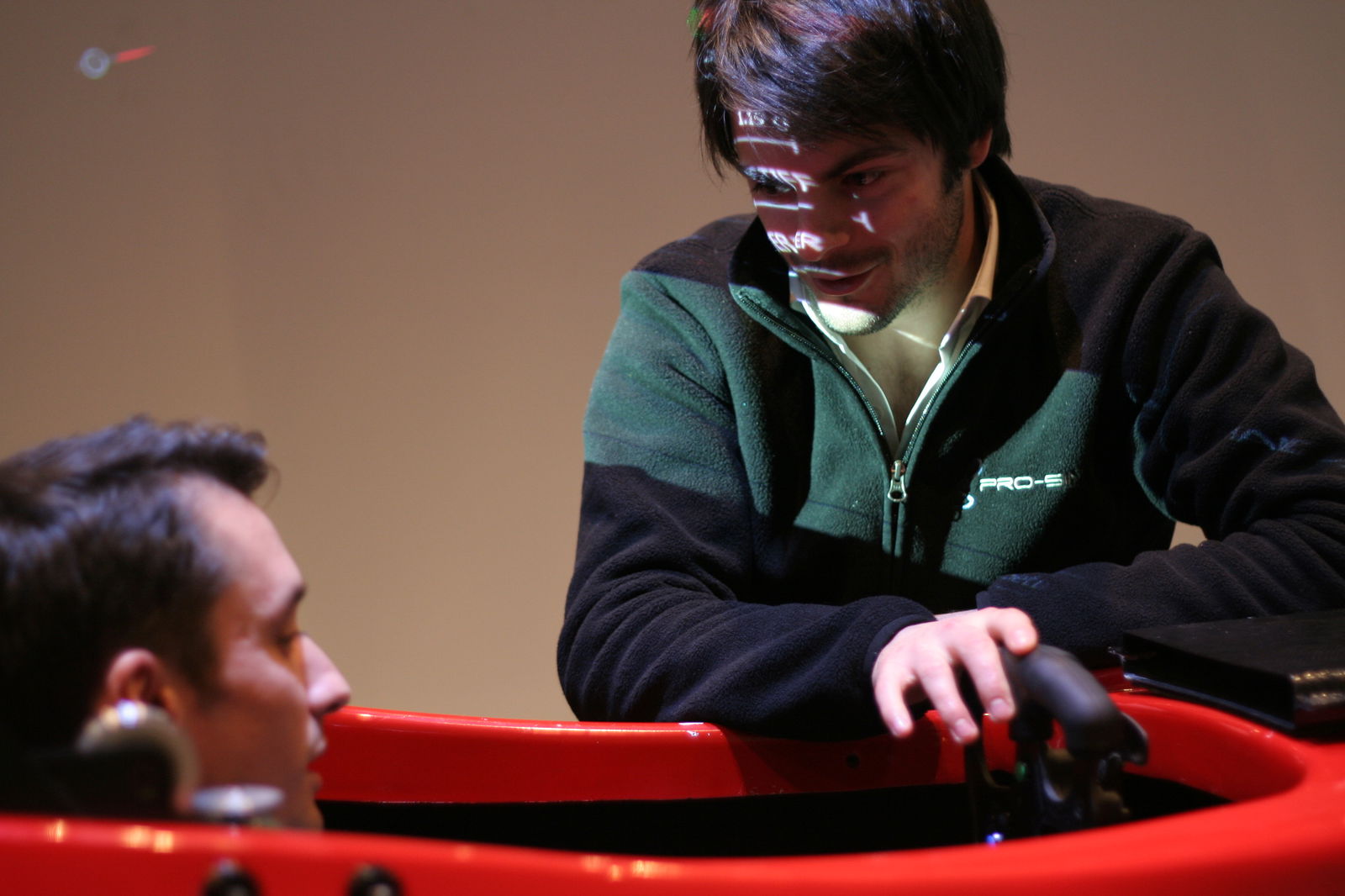
I climb down into the single seater, and adjust the wheels and pedals for my lanky frame. It’s surprisingly comfortable, and it’s interesting how quickly you acclimatise to racing with your legs outstretched - it feels very natural. Adrian loads up Damani’s Volkswagen Golf race car and sends me out onto Silverstone to show him what I’ve got.
It’s front-wheel drive and not immensely powerful, which makes it a great place to start and get acclimatised. I picked Silverstone because I know it well, but I soon discover that I haven’t driven the new layout very much at all, which makes it tricky to know what’s coming next. After a couple of slow laps of out-braking myself, driving totally random lines, and completely forgetting where I was on track, I felt I had the layout pretty well sussed.
As the lights come on after five or six laps, I’m pretty pleased with my performance, and it’s here that Adrian’s experience becomes invaluable - he’s been a Formula 1 test driver and is currently racing for McLaren in GT racing - and Pro Sim’s unique selling point comes to the fore.
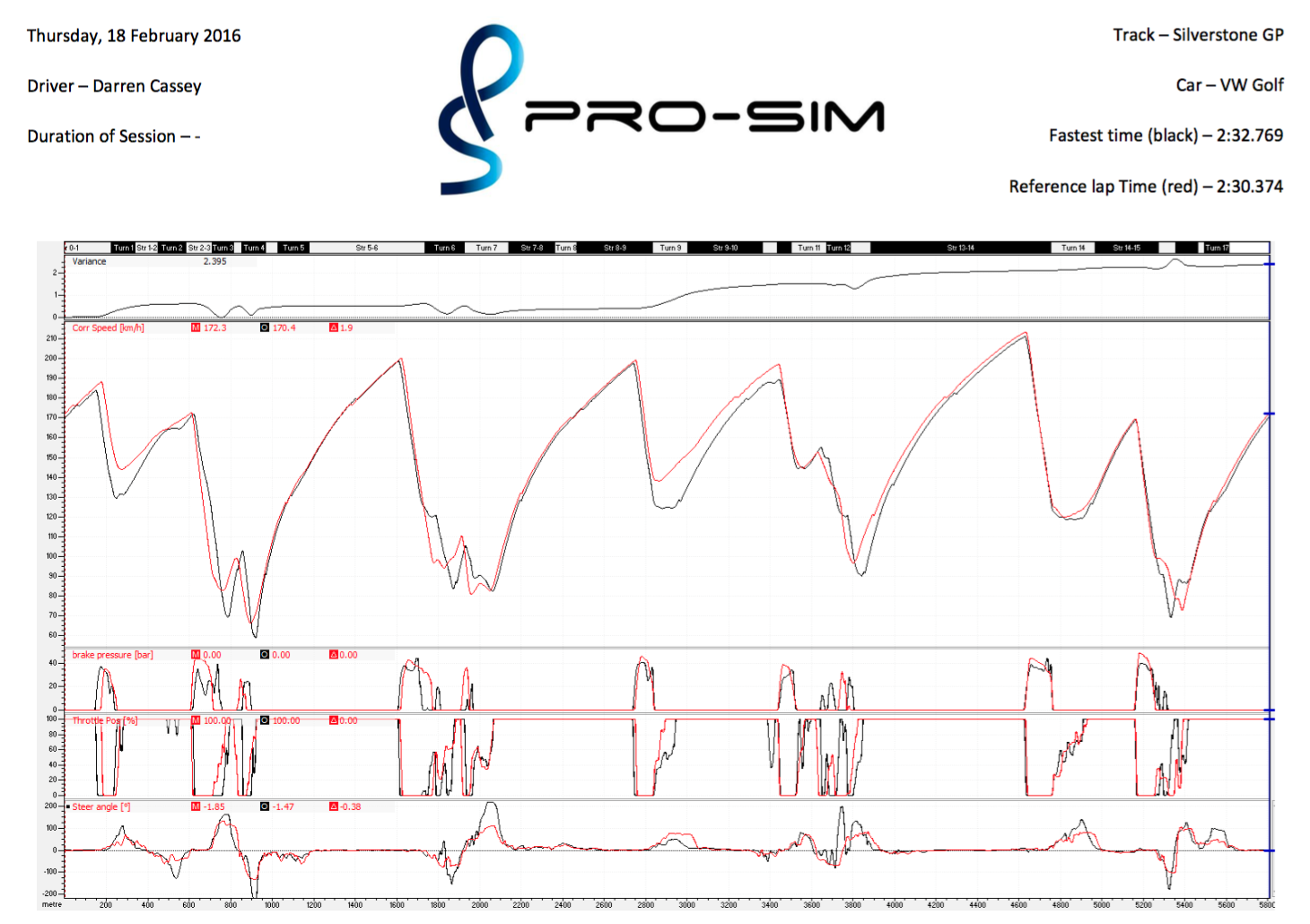
The data above traces my performance compared to Damani - he’s in red, I’m in black. Adrian sat with me and explained where I’m losing time and why, and I was pleased to hear that my main issue came from not knowing the track. The largest traces are our speeds across the lap, and while Damani’s trace is mostly quite smooth - aside from the occasional stab between corners where necessary - mine is jagged and inconsistent. This is because I don’t know my braking points or maximum cornering speeds, meaning I’ll occasionally brake too early and realise I could carry more speed, so give the car some throttle, unsettling the car and ruining my line.
The other issue I had, which became more of a problem in the more powerful rear-wheel drive cars, is that I put in too much steering angle. Here’s Adrian’s analysis:
“Your inputs needed to be smoother and more controlled. When you were not sure, you would just turn in very aggressively with a lot of lock to break the grip on the tyres by going over the slip angle. This sets you a false limit and always makes the car very unpredictable as when you unwind the lock you would get a snap of oversteer. With this technique you were also exiting corners in the middle of the track and not using all the road available which is just giving speed and time away.”
I take a short break from the simulator to get Damani’s take on things. He’s a bit more polite about my performance - though I’m pretty chuffed to be just three seconds off his pace with only a handful of laps under my belt - and he explains that he comes down to Pro Sim in order to learn the track before a race weekend, so that when he gets in his real car for testing he can go all out from the word go.
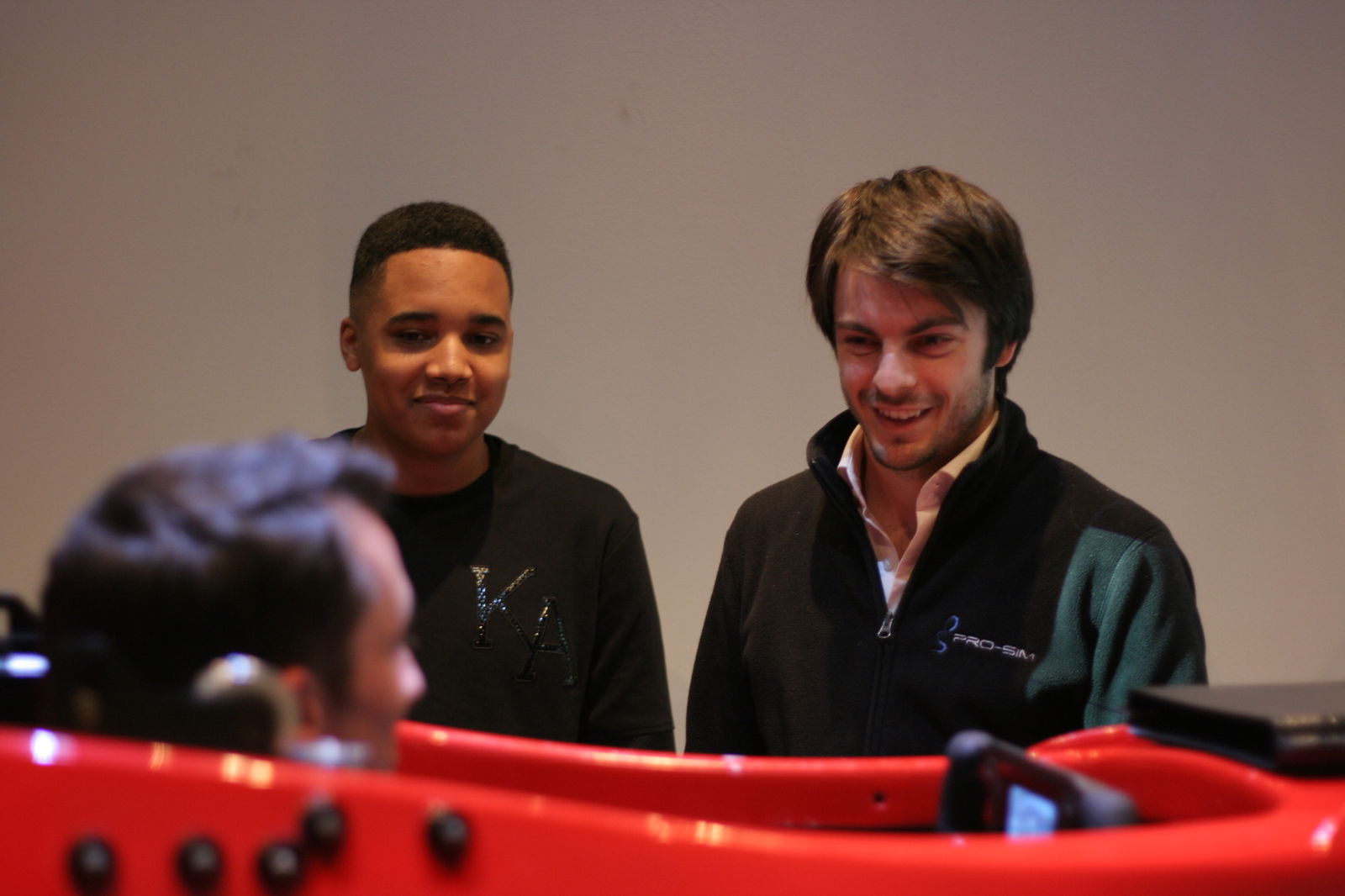
I ask if the virtual car is truly relevant to his real world performance, and he tells me that his simulator times are now within a second of his actual pace: “When you put videos of the sim vs real life side by side you can really see how close they are.” Pro Sim’s virtual world is constantly evolving, with input from the professionals who test on it resulting in more realistic car and physics models.
As well as the big setup at Pro Sim’s headquarters, the company sells its rigs to drivers and teams so that they can get the benefit of simulator work without having to travel. It all works off a modified version of rFactor - in fact the original game is barely there at all. Adrian says he uses rFactor because it is so readily editable, allowing him to tweak a car’s performance if a driver tells him something is wrong. He has also uploaded laser-scanned race tracks where they’re available, and whenever he changes something, it’s automatically updated on his customers’ systems to ensure they’re always up-to-date.
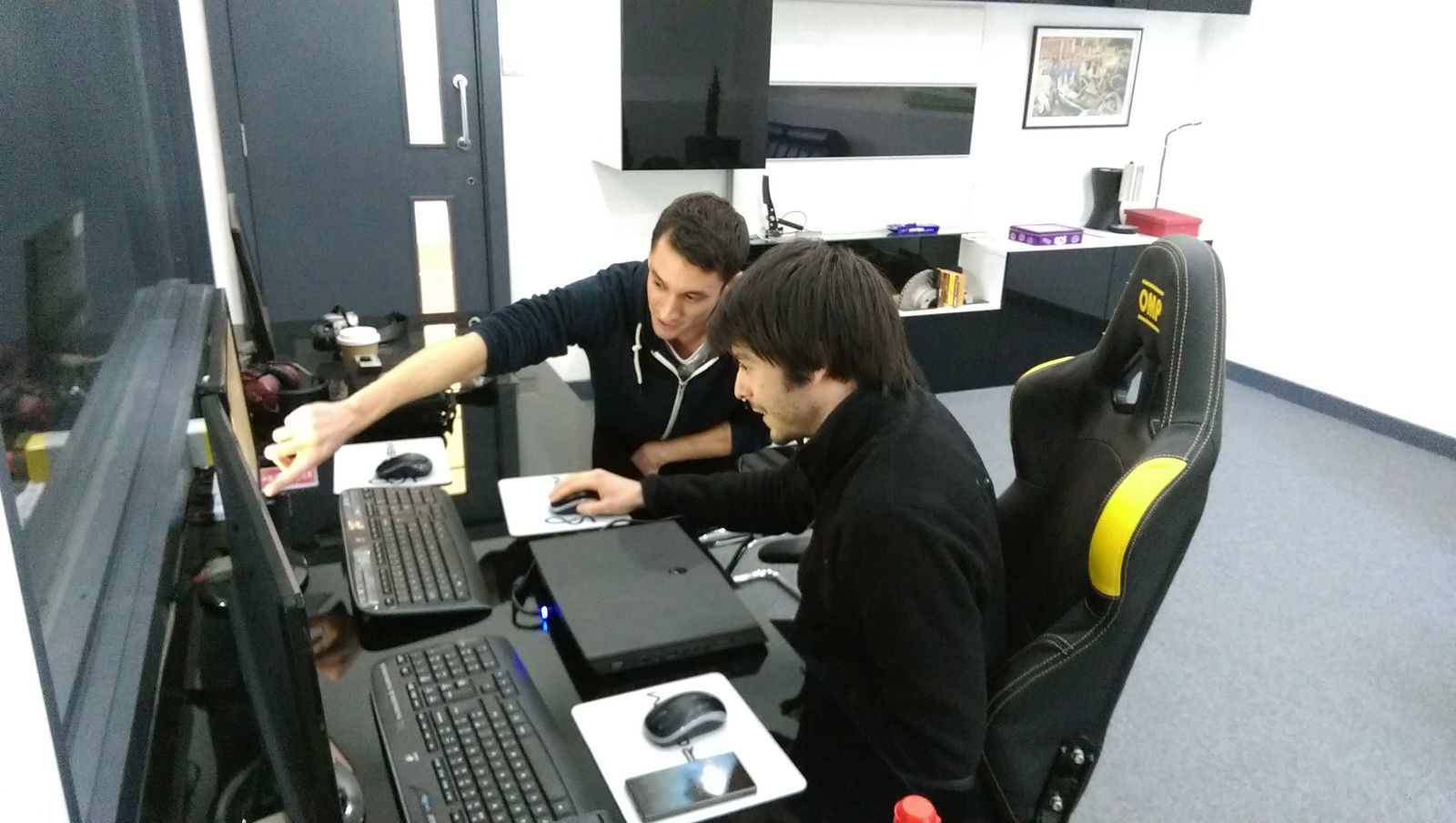
It’s time to get behind the wheel again, and this time I’m making the step up to GT3 racing with an Aston Martin. It’s instantly an attack on the senses. Planting your foot on the throttle results in the car squirming at the rear, which quickly forces you to zone in, and the noise from the engine is incredibly loud. It really gets you into the moment.
The first lap involves me overshooting pretty much every apex and exiting most corners on opposite lock, but I begin to realise what gear I should be in for each corner, and try to take Adrian’s comments on board by putting in less lock. That’s proving difficult, as it appears to be a nasty habit I’ve picked up from my days of gaming, and every time I get into the zone I snap myself out of it when I realise I’m swinging the steering wheel about too much.
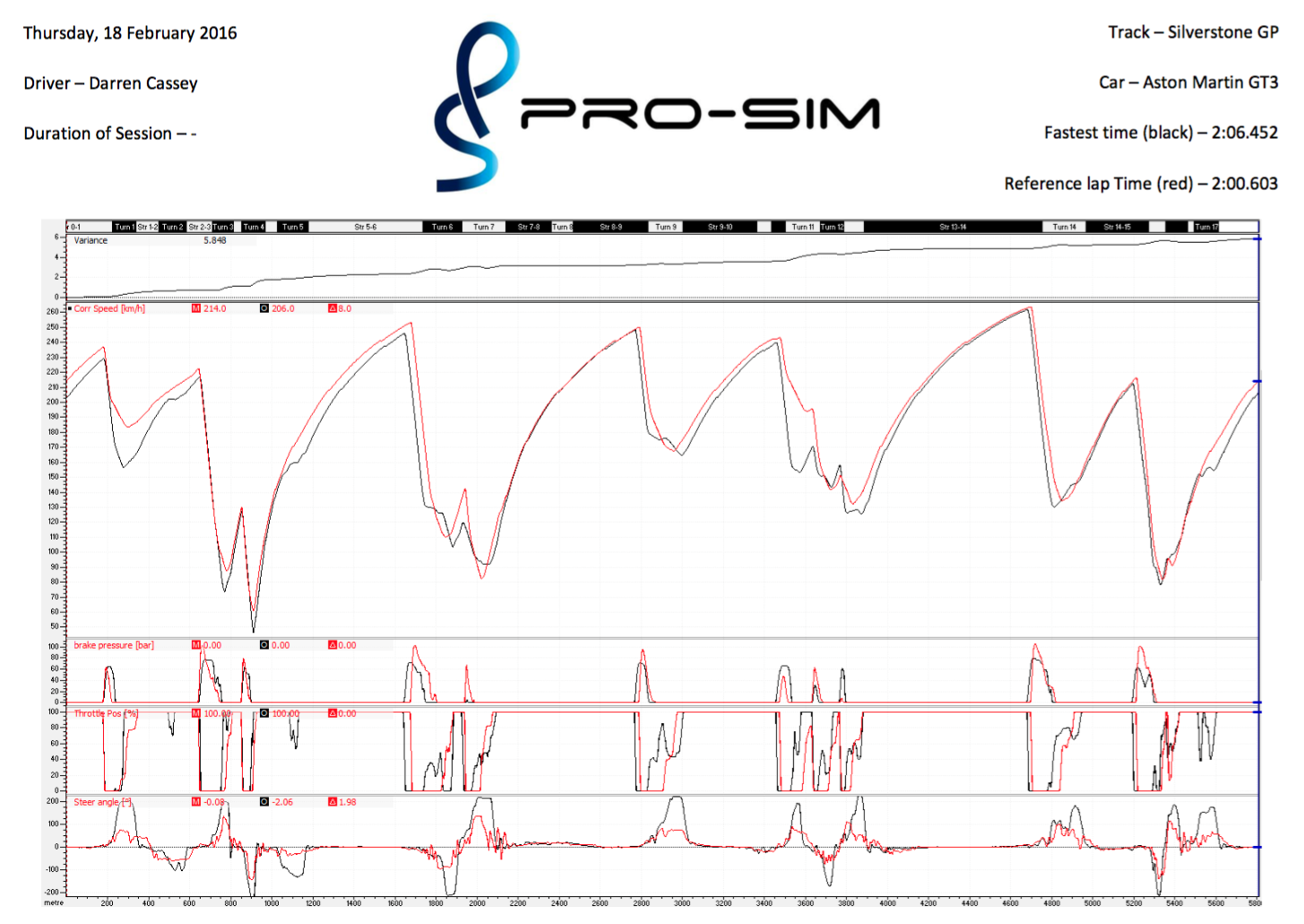
I actually feel more at home in a faster car, strangely, and find myself getting into a rhythm a lot more quickly. After another 10 minute stint I climb out of the simulator - rather ungracefully, I might add - and it’s time to go over the data once more. Adrian had jumped in the car before me so I could get an idea of where to brake and what lines to take, and with one flying lap he set a time of two minutes. As you can see, I was a solid six seconds off the pace, but the data trace is much more favourable this time.
Adrian carried much more speed through turn one and the kink at turn five, where I lifted the throttle slightly. The latter was enough to give him a higher speed all the way along the straight, giving a huge advantage. Through turn 11 is where he ekes out another big advantage, as I hesitate and brake too hard.
Part of my problem - which is partly rooted in the fact I haven’t had time to learn the track well enough to be confident - is my pedal work. As you can see from the second-from-bottom graph, my throttle position is far more erratic than Adrian’s. I occasionally give a stab of throttle mid-corner when I think I can accelerate, but have to hold off - all this unsettles the car and makes powering out of a corner less efficient.
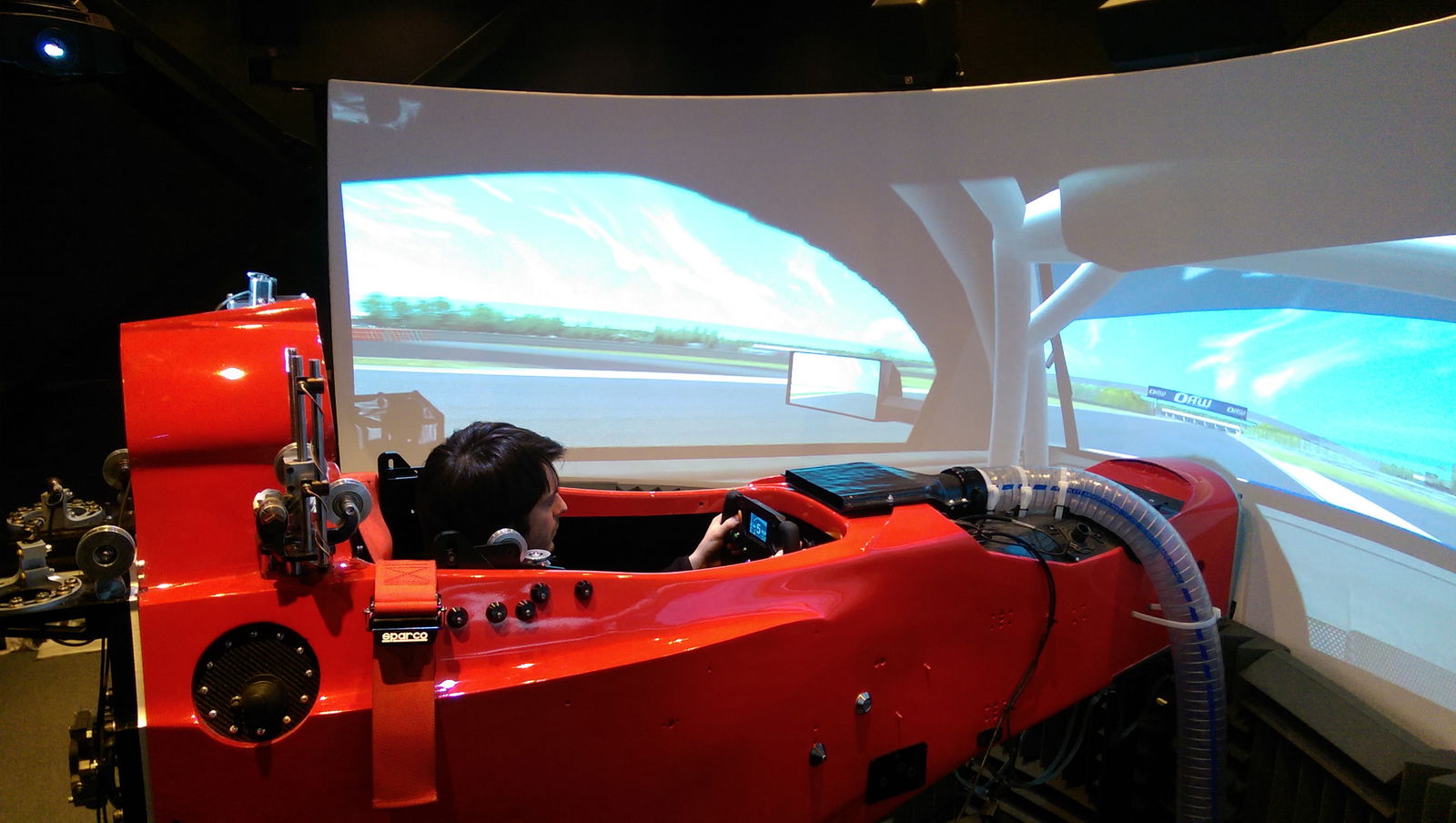
Although I’m fairly happy with how my speed matches up across the lap, there are a few key areas that I’m falling massively behind, and a six second deficit would have me well down the grid! Still, it’s easy to see where I’m going wrong, and with another session at Pro Sim I could see myself chopping full seconds off my times. I’d be interested to see how much faster my times would be if I had jumped back in the same car after chatting to Adrian between each stint.
I’ve held off asking the big question until I’ve had seat time to get my own opinion, but I’m intrigued to know if there was any reason other than cost as to why Adrian didn’t go for a simulator setup that moves with you. He said:
I wanted to ensure the sim met the needs from a driver’s point of view rather than an engineer. I have benefitted from driving every kind of simulator all the way up to full motion F1 sims, and as good as they were, you still had to ignore quite a lot of the ‘effects’. This is because [hydraulic sims] can only travel so far and have to stop at some point, which can be felt as grip loss.
Obviously some sims are much better than others in this department, but even on some F1 sims you still have to ignore some of these inputs, and the investment required for a full motion hexapod is extremely high just to ignore a lot of feelings. With a static sim you do not get any feedback through the car and so your mind fills in the blanks more effectively than it filters out wrong inputs.
I’m inclined to agree. I’ve raced on (admittedly low-budget) hydraulic simulators before, and the movements are almost completely irrelevant, to the point where my mind tuned out to what the rig was doing. In the Pro Sim setup, I found myself so in the zone at one point that the blurred section at the top of the screen that’s meant to look like the top of your helmet lead me to believe I was actually wearing one. I’m embarrassed to say that for a fleeting second I was very confused as to when I’d put a helmet on…
So your mind is ridiculously good at making your reality as close to what it thinks it should be, but what about the stuff you can feel at Pro Sim? The actual wheel and pedal set is incredibly well put together, and offers the best feedback I’ve ever felt through a virtual setup - the wheel weight is sublime. The brake pedal uses an AP Racing master cylinder, the steering wheel is a top end simulator wheel with custom firmware taken from genuine steering torque data, and if you spec the sequential shifter you’ll get a genuine Quaife Engineering setup (Adrian’s family run that company, so he’s got a legitimate engineering background, too).
If you want to see all of my mistakes for yourself, check out my fastest times above. First up is the Aston Martin GT3 car, where my crazy steering lock and over enthusiastic throttle prods cost me time, while the second video is my quick go in a GP2 car. No, in my three hot laps I didn’t complete one without spinning. Yes, that really was my best lap. Those GP2 cars deliver their power violently, making spinning pretty easy, though on this lap I span because I went across the kerb - these cars run so low to the ground that it just threw the car sideways.
Before I leave, it’s time to get an honest assessment from Adrian, who shatters my Le Mans-winning dreams in one quick sentence - “I think we need a little more time to turn you into a race driver!” That’s the polite way of saying ‘you were pretty bad’, but I’ve been mostly pleased with how my performance has moved on - all of these hints and tips were genuinely helpful. I’m offered a glimmer of hope, as Adrian continues, saying “There was potential if coached in the correct direction as when you drove the Golf at the beginning you looked quite comfortable and the times were also very good.”
I decide to call it a day on a positive note, and on reflection it’s easy to understand why teams invest so much time and money into these setups. With just nine laps across three cars, I learned about the multitude of bad habits I’d picked up, techniques I never even knew about, and how my lines were slowing me down in places. For professionals, learning the intricacies of a track before they even arrive can be the difference between languishing in the mid-pack or sitting on the front row.
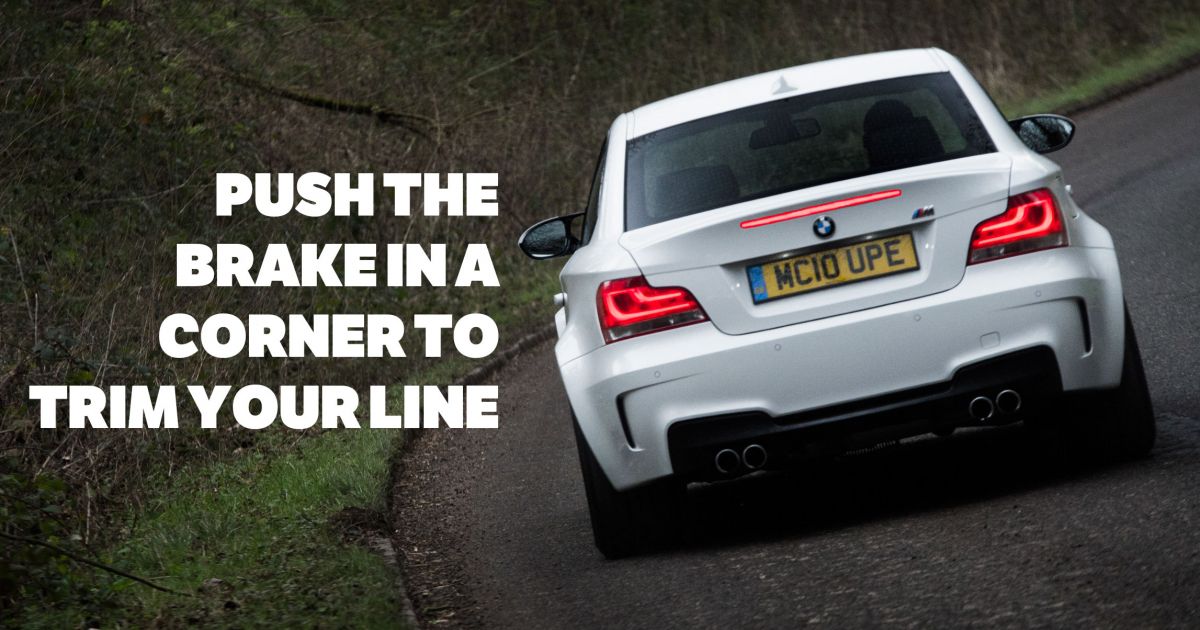
Comments
How long did it take you to write this article….?
Cracking story Darren!
Then there is iRacing.
It’s interesting to see how the pros do it.
Even on an amateur level though, telemetry is the best thing to happen to sim racing. The difference in learning curve is disgusting
I would love to do this one day. Amazing article. Can’t wait to see more like this.
One doesn’t not simply become good in one day
Max Verstappen spends a lot of time in his sim, a lot of his overtaking manoeuvres trains he on his sim. And Hamilton just keeps saying that a sim is useless 😂
Great review Darren! I am really glad that you enjoyed it too! People can see a side-by-side comparison of Pro-Sim to the real world in my review of their Evolution Simulator for use at home and at team facilities here: https://www.carthrottle.com/post/w68m66q/
If I had one of these I would never leave my house.
Make those brakes glow